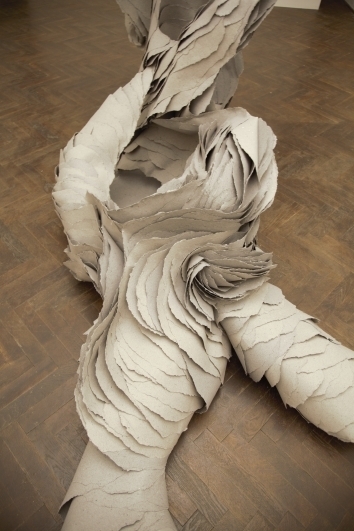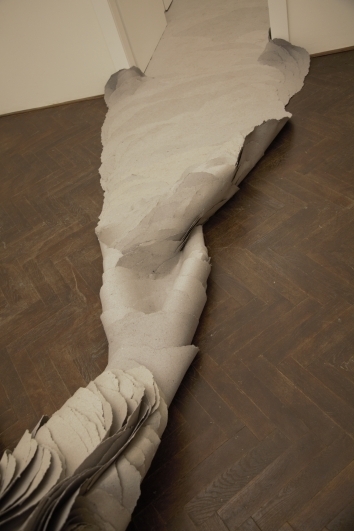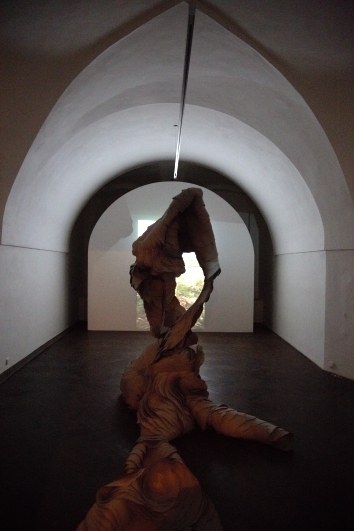Start up: Celeste Capine Hill – Killed by the Light 14. 7. 2017 – 10. 9. 2017
“People living close to the border see individuals, while people living farther away are only aware of a general problem and do not see the individuals.”
Celeste Capine Hill (born 1986) comes from southern Texas, a region immediately on the USA-Mexican border. It is a region full of local culture and history, for it is an area that throughout history has been inhabited by various Central or North American native peoples. It is also the only place in the world where a so-called “First World” country borders a country of the “Third World.” For many decades, the resulting differences in living standards have generated massive levels of migration. Hill’s family home lies close to the paths that many immigrants follow on their way across the desert to the USA.
Killed by the Light explores and combines two levels of space-time associated with this landscape. On the one hand, she refers to the ancient Aztec myth regarding the origin of two of the highest peaks in Mexico: The story of the heroic warrior Popocatépetl and the princess Iztaccíhuatl, the Romeo and Juliet of Aztec mythology, whose bodies were transformed for all eternity into two mountains that form the dividing line between continents and civilizations. On the other hand, the installation works with the real experience of encountering migrants passing through the desert, including the many traces they leave behind. “The thought of imagining the migrants’ bodies as part of the landscape began to form while viewing found objects, especially when uncovering hidden trash pockets. It’s as though the migrants, as they leave behind these objects on their trek through this terrain, are perhaps also leaving behind their dreams inside the empty containers,” says Hill.
The object made of layers of paper on a wire frame captures the process of transforming human beings into a landscape on the physical as well as symbolic level. It evokes the layered and fragile nature of both landscape and man. The grey color of the recycled paper resembles the tonal range of the desert landscape, and its texture recalls the visual characteristics of the desert, which reveals its texture only upon a closer look. The plastic water canisters – a characteristic artifact associated with migrants and a reference to the traces they leave in the desert – are used as projection screens for videos shot near the artist’s home. These projected videos give the abstract sculpture a real and concrete context. They capture a desert landscape in which birds can move about freely but people must arduously overcome the difficult terrain overgrown with thorny bushes.
Despite the mythical and metaphorical references, however, the main focus of the installation at Prague City Gallery is clearly the human dimension: the situation faced by real migrants, victims of a certain critical and societal state of affairs. Killed by the Light places the seemingly distant subject of migrants within the immediate reach of our sensory experience. It forces the viewer to step on parts of the sculpture, thus making us realize that we are active participants in this process. The exhibition is proof of the possibilities of a daring, authentically direct, and simultaneously highly sensitive understanding of human tragedy. Her work is free of the detached relativizing so typical for us as Central Europeans, which prevents engaged art from establishing itself… not in the form of bold proclamatory gestures but as a natural act of conscience and solidarity – for instance, with people who remain far away even when they are just across the borders of our own countries.
Celeste Capine Hill (*1986, Texas, USA), is a recent graduate of the Intermedia Studio at the Academy of Arts, Architecture and Design in Prague, Czech Republic. She currently lives and works in Val Verde County, Texas.
Jitka Hlaváčková





